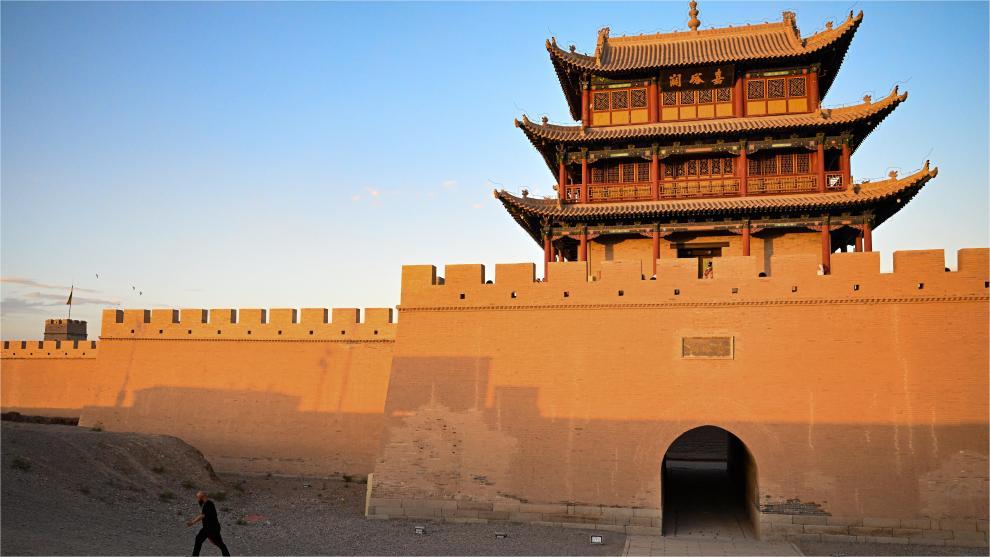Popular brands enter lower-tier market

A staff member makes coffee at a 24-hour coffee shop in Qingtian county, Lishui city, east China's Zhejiang Province, on Nov. 30, 2023. (Xinhua/Xu Yu)
The presence of popular brands like Chinese drink chain HEYTEA, Starbucks, and other well-known names in third- and fourth-tier cities has brought great joy to many young people who have returned to their hometowns.
The emergence of these brands has transformed the lower-tier market into a highly desirable destination, thanks to the increased spending power of young consumers.
In November 2023, KFC launched a K-COFFEE café and restaurant in Shangyou county, Ganzhou city, east China's Jiangxi Province. Within a month of its opening, the establishment quickly gained popularity among young people in the area.
This is not the first time K-COFFEE has ventured into a county. In April 2023, the first K-COFFEE café in central China's Hubei Province opened in Yingcheng city.
Guo Wei, a native of Yingcheng, returned to her hometown after graduating from college in Wuhan, the provincial capital of Hubei. Since the opening of K-COFFEE, she has become a regular customer.
"I used to enjoy hanging out in coffee shops while I was in college. Since returning to Yingcheng over a year ago, the thing I struggled with the most was not being able to find a coffee shop that I liked. Now, I finally have a place in Yingcheng where I can come and enjoy coffee every day," Guo said.
Lower-tier cities have become an important market for coffee brands. Records show that Anji county in east China's Zhejiang Province, with a population of less than 600,000, already boasts of around 300 coffee shops.
Starbucks has opened 382 new stores in China, with many located in counties or county-level cities.
In addition to the proliferation of coffee shops, the lower-tier market is witnessing a notable diversity of brands across different sectors, including tea drinks, restaurants, clothing, and hotels.
Tea drink brands like HEYTEA and Nayuki have expanded into the lower-tier market by introducing franchise opportunities.
Nayuki's initial stores in third- and fourth-tier cities such as Nanyang, Shiyan, and Xinxiang have experienced remarkable success, with daily sales exceeding 5,000 cups.
A YumChina executive said KFC has expanded its footprint to cover more than 1,900 cities and towns in China. In the first three quarters of 2023, about 60 percent of the newly established KFC restaurants were located in lower-tier cities.
Pizza Hut boasts of a presence in over 700 cities and towns with more than 3,200 stores. In the first three quarters of 2023, around 50 percent of the newly established Pizza Hut restaurants were situated in lower-tier cities.
By the end of 2022, China's urban population had exceeded 920 million, with around 30 percent concentrated in over 1,800 counties and county-level cities. Furthermore, the county economy was witnessing continuous growth, with an increasing number of county-level cities achieving a GDP of over 100 billion yuan ($13.96 billion).
McKinsey estimates that lower-tier markets, especially counties, are projected to drive over 66 percent of personal consumption growth in China by 2030.
In recent years, young people in lower-tier cities have emerged as a significant driving force of consumption.
Despite having lower incomes compared to their counterparts in first-tier cities, they enjoy the advantage of stable employment and face less financial pressure when it comes to housing expenses. As a result, they demonstrate a higher propensity to spend.
According to a report by global management and consulting giant Accenture, the daily consumption demand in lower-tier cities in China is higher than in first and second-tier cities, with demand for clothing and footwear accounting for 74.4 percent of daily consumer needs.
Photos
Related Stories
- China unveils 400 new shopping malls in 2023: report
- Night fairs heat up winter consumption in south China
- China's sports consumption continues to grow
- New-style tea beverages brew new consumption trend
- Commentary: "Double 11" shopping gala testifies China's robust recovery of consumption
- Chinese commerce minister vows to expand consumption, stabilize foreign trade, investment
- Foreign companies tap consumption potential in fast-growing Chinese market
- China's parcel delivery sector hits record pace
- China's consumption reports robust growth, services spending soars
- "Golden Week" in China sees consumption boom
Copyright © 2023 People's Daily Online. All Rights Reserved.









